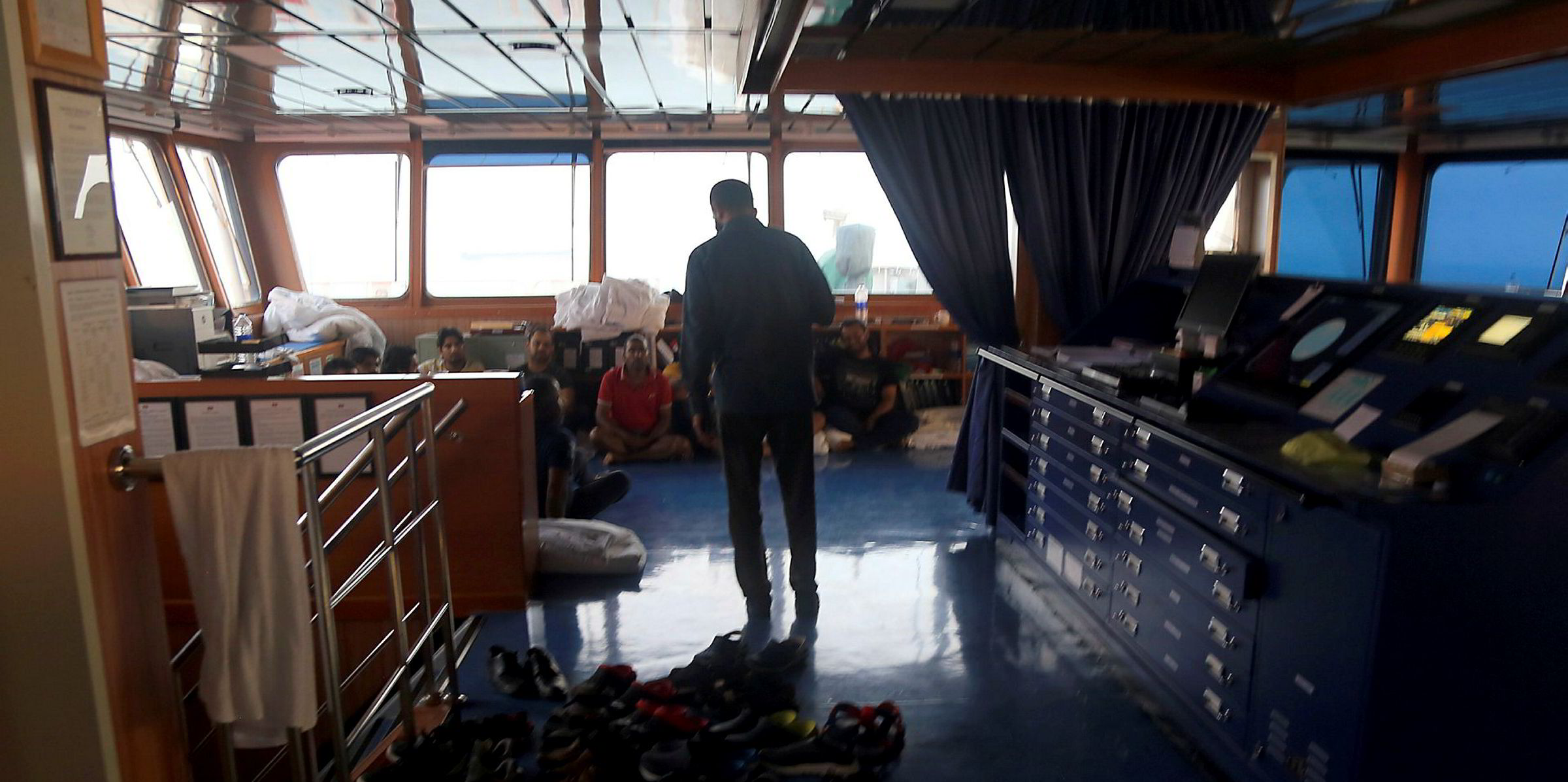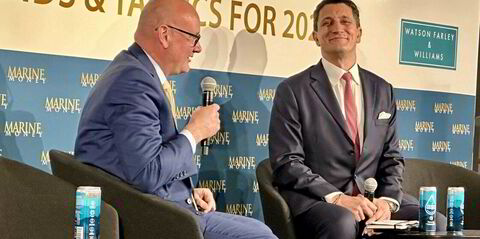Tanker owners have pulled back from the Middle East Gulf in the past month amid growing tension in the world’s prime oil shipping route, data suggests.
The apparent retreat comes following attacks on two tankers in June and ahead of Iran’s seizing of the 50,000-dwt Stena Impero (built 2018) on Friday that escalated hostilities in the region.
British-flagged tankers in the area are in particularly short supply at a time when relations between London and Tehran have been super-charged by the detention of the 301,000-dwt Grace 1 (built 1997) in Gibraltar.
Ship data analysis company Windward said that tanker traffic around Iranian waters is now down by over one-fifth during the past four weeks.
The decrease follows attacks on the 110,000-dwt Front Altair (built 2016) and 27,000-dwt Kokuka Courageous in June.
Windward said: “Recent developments in the Gulf are prompting a shift in operational patterns for tankers crossing the Strait of Hormuz.
"There are now 22% fewer of them sailing through Iranian waters compared with four weeks ago.
“While this may mitigate security risks, there is a question as to whether this is happening at the cost of safety, as vessels avoid established shipping lanes.”
UK flag tankers would also appear to be avoiding the area. Windward’s figures show that there are 47 UK registered vessels in the Persian Gulf and off the coast of Oman. But only six of these are tankers.
Iran pounced on the Stena Impero, which flies the UK flag, on Friday night in retaliation for the UK holding the Grace 1.
Dramatic video footage of the incident showing masked commandos from the Iranian Revolutionary Guard abseiling from a helicopter onto the steaming tanker, which was surrounded by fast attack boats.
Data from VesselsValue shows Stena Bulk is one of the most active shipowners flying the flags of the UK or related territories in the region since the beginning of 2018.
Mitsui OSK Lines (MOL) of Japan, compatriot Iino Marine Service, and Stolt Tankers are among the others sporting UK colours who are regularly active in the region during that time frame, the data shows.
The Strait of Hormuz is the passageway for 20% of the world's oil exports, with almost 19 million barrels per day (bpd) shipped through the narrow waterway, according to BBC.
Despite the area being a key choke-point for global oil shipments, tankers under the UK flag account for a relatively low proportion of movements in the region.
VesslesValue counts just 12 VLCCs flying the UK and related flags in the Gulf this year, which represents just 2% of overall VL activity there.
The 12 suezmaxes under the flag to call in the Gulf this year represent just 5% of the total, figures provided to TradeWinds show.
On the product side, the Stena Impero is one of 10 medium range tankers to fly the UK flag in the Gulf this year, equal to 4% of all the MRs to trade in the area, VesslesValue’s numbers suggest.
UK flags are most prominent in smaller chemical tankers in the region, with 17 of the ships calling this year, representing 12% of the total.
Court Smith, an analyst at VesselsValue, said Chinese flagged ships are far more prevalent in the Middle East trade, meaning any withdrawal of UK flagged ships from the area is unlikely to provide a major catalyst for freight rates.
“I think the perception of rising risk might deter some owners outside the VLCC market, but it’s not like there are many other green pastures to run to right now as low rates are endemic to most load areas,” he added.







